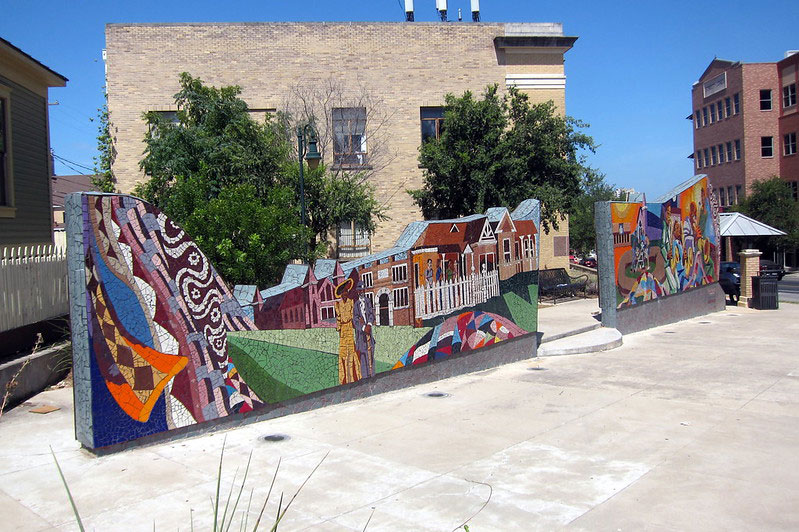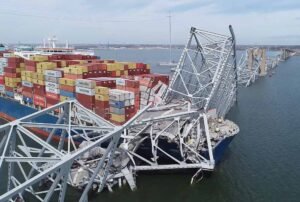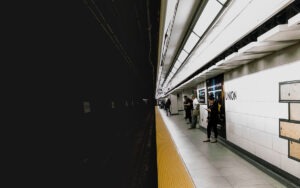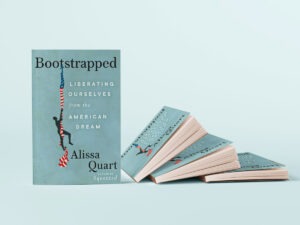
While we have much to learn about the full breadth and impact of the COVID-19 pandemic, it is clear that the burden of the disease—as with so many disasters—is falling disproportionately on cities’ most vulnerable residents.
Seniors, low-wage workers, people of color, public housing residents, and immigrants are all at higher risk of both COVID-19 exposure and its cascading negative effects. As the pandemic progresses, it is laying bare the full spectrum of structural inequities underpinning COVID-19’s terrible toll on certain communities among us.
While federal and state government understandably get the most attention, the impact of the pandemic is felt most immediately in local communities. And when looking at those local communities, we have an outmoded vision—particularly in the United States—of how cities function and are governed. From afterschool programming to neighborhood senior center meal provision, city residents often interface with and experience government not simply through municipal agencies and departments, but through trusted nonprofit intermediaries.
This is hardly a new observation. For instance, studying the city of Boston years ago, University of Michigan sociologist Jeremy Levine recognized that the actual “governing” of the city of Boston was performed less by the nominal city government, and more by nonprofits. As Levine wrote:
I argue that CBOs [community-based organizations] can supersede local elected officials as the legitimate representatives of poor urban neighborhoods…and they negotiate directly with bureaucrats and private funders—the holders of resources who, in turn, treat CBOs as more authentic neighborhood representatives than elected politicians.
What does this have to do with pandemic response? Oh, just about everything. Levine called this phenomenon the “privatization of political representation.”
In other words, these days, you have human service providers, the local community development organizations, faith-based service and social support groups, and others that advocate for the needs of community residents, provide them with a suite of human and social services, and help contribute to a sense of place among neighbors. This is especially true in US cities where federal and local governments have come to rely on nonprofits to deliver services to vulnerable communities over the past four decades and where there is a high concentration of local CBOs fulfilling such roles.
In good times, relationships between these organizations and residents engender community trust, as they foster the overall health and well-being of individual community members. During crises such as COVID-19, they become the lifelines that provide residents with access to essential information, help meet their basic needs, and serve as the trusted pathway to city-led response and recovery efforts.
In short, in pandemic times, we recognize—or fail to recognize—these realities at our peril.
Of course, municipal and county agencies interface day in and day out with residents as well, through local public schools, public housing authorities, and public benefits. But leave nonprofits out of the response equation, and let’s just say there are huge gaps to fill.
All too often, cities lack a unified view of the entire complex web of social service agencies and myriad nonprofit organizations at work in their most vulnerable communities. Further complicating these relationships is the reality that different divisions within even a single government agency often partner with different subnetworks of community-based organizations to advance their different initiatives. And from the CBO perspective, especially in larger organizations, different program leads and managers within the organization will be working with multiple city and county agency contacts.
Sign up for our free newsletters
Subscribe to NPQ's newsletters to have our top stories delivered directly to your inbox.
By signing up, you agree to our privacy policy and terms of use, and to receive messages from NPQ and our partners.
The result is a fragmented system. Without a unified understanding of the entire system, governments lose valuable time when disaster hits. And in disasters, like in pandemics, lost time can cost lives. Again, this is not a new observation. Some readers may recall that after Superstorm Sandy hit New York City, one of the most effective responses was led by a coalition of community organizations known as Occupy Sandy.
What then must be done? Clearly, local governments must find ways to support, activate, and partner with critical community-based organizations to better respond to and recover from the COVID-19 pandemic. And beyond the shock of COVID-19, this same infrastructure needs to be strengthened to foster closer collaboration and communication with residents in the “new normal” once the pandemic subsides.
To build their resilience to future shocks and strengthen the social fabric of their neighborhoods, cities must foster and manage this ecosystem of government agencies and nonprofit organizations with the same focus and intentionality that they bring to any other critical urban infrastructure system. Starting today, when many local governments are still in COVID-19 response mode and looking ahead to recovery, there are critical actions they can take toward building a more integrated system of agencies and nonprofit partners at work in vulnerable communities:
Designate Agency “Network Stewards” and Activate Feedback Loops with Existing City-CBO Sub-Networks
Cities need clearer lines of sight on the entire ecosystem of nonprofits and community-based groups. To do this, local governments should identify the “network stewards” of the various subnetworks of nonprofits that liaise with each agency. These network stewards are often the program directors or division heads. In many cases, they have longstanding relationships with local CBOs. Most likely, these network stewards are already being tapped to push out messaging from the city, but they should also be leveraged to open up critical feedback loops to learn directly from organizations and communities: How are their needs evolving? How effective (or not) are response efforts, and what needs to be tweaked? How should recovery programming be designed to best respond to the communities’ priorities?
Reexamine Local Government’s Funding and Contracting Responsibilities to Partner Organizations
Among COVID-19’s compounding ripple effects is the potential to force vital nonprofit service providers to operate at critically reduced capacity or even shutter completely. Leaders in the philanthropic sector have committed to working with nonprofit partners to eliminate inefficiencies. While cities face greater legal requirements than foundations, cities should consider the steps they can take to ensure their nonprofit partners can focus on delivering services to vulnerable residents. Whether that’s expediting payment, ensuring nonprofits secure financing, or connecting nonprofit partners to local COVID-19 emergency loan or grant funds, local government plays a vital role. And in the long term, local governments should invest to boost the ecosystem to meet the challenges of future shocks.
Leverage Local Government Leadership’s Convening Power
If there were ever a time for government leaders to use the power of the bully pulpit to elevate this overlooked but critical urban system, it is during the COVID-19 crisis. A virtual convening demands much less in the way of planning and logistics than a typical mayoral-and-chief-executive gathering would, and it would send a powerful signal of support and care to these critical partners and the communities they serve. Fostering community among this citywide network of partners from City Hall is a critical first step in building the goodwill and stamina needed for the long road to recovery and in creating the foundation for stronger working relationships moving forward.
Co-Design Response and Recovery Programming with Agencies, Nonprofit Partners, and Residents
As local governments make the transition from response to recovery and manage the infusion of federal stimulus funds, they should take the opportunity to rethink their service design and delivery models in partnership with vulnerable populations and the nonprofits that serve them. While many local governments have already taken the lead in leveraging human-centered design to pilot programs or services, too often these practices are viewed as inefficient in moments of crisis. Local governments should activate the full power of the ecosystem of agencies and nonprofits working with residents when mapping out cities’ suites of COVID-19 recovery programming.
Using recovery goals as the entry point for this co-design could be a particularly effective means to build this collaboration. In the current pandemic context, for instance, consider the power in bringing together all the relevant agencies and nonprofits working in a given community along with residents to design new ways to achieve testing and contact tracing goals for a neighborhood.
Designate a Citywide Ecosystem Leader
Once local governments emerge from crisis mode and settle into a more stable recovery phase, they should consider institutionalizing the role of ecosystem leader at the citywide scale. This role should go beyond tackling the byzantine city contracting hurdles and regulations that nonprofits face—a function that, in some cities, is already in place—and focus on critical relationship-building and network-weaving efforts that could strengthen the ecosystem as a whole.
Strategically cultivating and curating this diffuse network of agency network stewards and nonprofit organizations with intentionality has the potential to reap benefits for vulnerable communities and cities as a whole. What’s more, this ecosystem leader would not need to be a new municipal position; other extant transversal government roles, such as chief resilience officers, chief innovation officers, or other similar silo-busting functions such as heads of intergovernmental or community affairs, could take on this critical responsibility as part of their portfolios.
While the COVID-19 pandemic may be the catalyst for change, bringing sharper local government focus to the critical infrastructure that links the public sector to its vulnerable communities is long overdue. Cities should seize this opportunity to build stronger bridges to their residents and foster a more responsive government that boosts much needed trust in the public sector among residents. By managing this complex and often unseen city system as a whole, cities can both better respond to the pandemic and set the foundation for building better places for all of their residents, especially the most vulnerable among us, today and moving forward.










